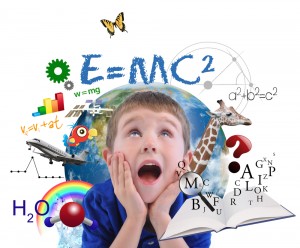SPICE of Learning Philosophy
Why do so many learners have the potential to learn but do not meet this potential?
Perhaps you know one of these learners- a student or son or daughter- or perhaps you have been one yourself.
At school ‘learning’ is attributed to the intellectual aspects especially literacy and numeracy. Yet if we reflect on our own learning throughout our lives we will notice that ‘intellectual’ learning only makes up a portion of our learning success. Learning can occur because we show interest or confidence in the ‘subject’, or it can be inhibited because we associate the ‘subject’ with a negative past experience.
In fact, many elements shape our learning success, and through our experience at Edumazing and my many years of leadership and experience in Education we have discovered we can summarise these into what we have called Human LiteracyTM. Human LiteracyTM comprises five elements that we call the ‘S.P.I.C.E’ of Learning: the Social, Physical, Intellectual, Cultural and Emotional elements of learning. All of these elements must be understood and supported if learners are to reach their true potential. It is also essential to understand that these elements are interelated. They have only been separated to understand each important part. The whole is greater than the sum of its parts and in this case we need to understand the parts in order to develop the whole. This is where holistic learning truly begins and flourishes.
The Human LiteracyTM elements:
The Social element suggests that the social impact of a situation can prevent or support our learning. It considers the learner’s relationships with others and how this affects learning. A child with no friends to play with; an argument with your spouse that prevents you from concentrating; a social group where you feel unwelcome or unappreciated; these are just some examples of the social issues we face as learners that provide huge blockers in our learning journey.
The Physical element considers both the physical state of the learner that either supports or limits their learning, and the physical environment the learner is in. Lack of sleep or inadequate diet can significantly reduce their capacity to learn. Physical or intellectual barriers may limit the ability to learn a particular skill effectively. The learner may be in an environment that stimulates their learning through pictures, words, tactile objects and sounds. Alternatively, they could be in an environment that limits their learning through lack of sufficient light, extreme temperatures, limited space and/or distractions.
The Intellectual element focuses on the learner’s academic intelligence and skills. The capacity to think, learn and act has the most focus in classrooms, but won’t be as beneficial or effective if other S.P.I.C.E factors aren’t considered. Learners must be challenged to learn at their own level- neither too difficult or too easy- and finding this balance means understanding the intellectual capabilities of the learner.
The Cultural element is the most profound and is affected by, and affects, all of the other factors. It relates to the learner’s personality, their background, and the beliefs, attitudes, interests and experiences that shape their identity. It considers family influences that affect the learner’s thinking and actions, and refers to their self-worth, confidence levels, motivation and morale. If a learner feels positive about themselves and has strategies in place to support their learning, they are more likely to experience successful learning.
The Emotional element is gaining huge momentum in being recognised as a powerful force in learning success. The learner’s emotions hugely influence their connections with others and the learning subject. Emotional intelligence plays a crucial role in learning, one that must not be neglected in any learning setting. Negative emotions about the ‘subject’ will have a negative impact on learning, whereas positive emotions will have a positive impact. If we are aware of how we feel, this will influence how we learn and what we learn.
How well do you know your own S.P.I.C.E. elements that help shape your own learning? How do you provide opportunities for others to learn that support each of these elements? If all learners are to shine we must understand their S.P.I.C.E. elements. The S.P.I.C.E. of Learning has the ingredients to help learners meet their learning potential.
Next time you see a child having difficulties learning, consider all the possible reasons why they are not learning. It may not be their lack of skills, but a S.P.I.C.E. element or elements that have not been understood and supported.
Written by:
Georgina Pazzi

